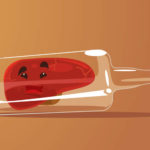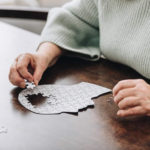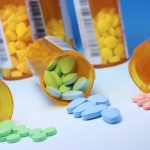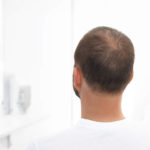
Previous
Six Reasons Why Bupleurum Is Used for Liver Health

Next
Important Facts About Salt and Cirrhosis
Psychological Tool to Reverse Fatty Liver Disease
Facilitated by diet and exercise, many cases of fatty liver disease can be defeated. A strategy recruiting the mind’s creativity can make these lifestyle changes feel effortless – and help the reversal of fatty liver disease become a reality.
Finding out that you are the one in four Americans living with non-alcoholic fatty liver disease (NAFLD) can feel discouraging. Even though a fatty liver can lead to advanced liver disease, there is great hope for reversing a mild case of NAFLD. Not surprisingly, the most powerful ingredients for getting rid of a fatty liver are diet and exercise, the same two words that conjure up feelings of dread in millions of people. Most assume that their willpower is the sole controller of their ability to diet and exercise. However, the simple act of visualizing health can be the most influential psychological tool to defeat fatty liver disease.
Non-Alcoholic Fatty Liver Disease
NAFLD describes two conditions that affect people who drink little or no alcohol. The first is a mild condition, while the second is its progression to a more severe disease.
1. Steatosis is a fatty liver, where the accumulation of fat in the liver has not yet caused liver damage. Most experts believe that steatosis is reversible.
2. Non-alcoholic steatohepatitis (NASH) is the accumulation of fat in the liver accompanied by hepatic inflammation. Fibrous tissue can form with NASH, which can progress to cirrhosis or liver cancer.
Steatosis is being increasingly diagnosed in all kinds of people, especially those who are overweight, diabetic and who have elevated cholesterol and triglyceride levels. Although the cause of NAFLD is unclear, significant weight gain and diabetes mellitus are often associated with its development. While using medications to manage diabetes and cholesterol can help reverse steatosis, diet and exercise are known to exert the greatest influence on a fatty liver.
Diet and Exercise
Regardless of the cause or degree of NAFLD, a diet and exercise program will reduce the amount of accumulated fat in the liver. The most effective nutritional plan is high in fiber, vitamins and minerals, while also being low in calories and saturated fat. Whether a person is underweight, an ideal weight, overweight or obese, a healthy diet and daily physical activity accomplishes the following to help reverse NAFLD:
1. Reduces hepatic inflammation
2. Lowers elevated liver enzyme levels
3. Decrease insulin resistance – this helps maintain blood sugar levels to prevent diabetes and obesity.
Visualization for Diet and Exercise
When it comes to making lifestyle changes such as diet and exercise, a February 2007 Mayo Clinic Special Report announced that counting on willpower alone invites failure. However, supplementing willpower with mental images of your intentions gives people a much greater chance of success. Without a doubt, the mind is a powerful force capable of amazing feats. People have been known to walk across hot coals, break through wooden boards with a karate chop and bicycle ride over 1,800 miles in the Tour de France – all unimaginable tasks without intense focus on goal visualization.
Since adhering to a healthful diet and engaging in regular exercise are crucial for reversing steatosis, here are several supportive visualizations to start you on your way:
· Instead of perceiving fatty, fried foods as a delicious treat, envision them as disguised pieces of lard. Imagine the slurry that lard creates in your blood vessels, contributing to feelings of sluggishness, being bloated and tired. This visualization can end junk food cravings.
· Plan on eating a fruit, vegetable or other healthful snack when hungry between meals. Picture your nutritious food melting away the fat in your liver, similar to how warm water causes salt crystals to dissolve. Make a mental connection between this dissolution of your liver’s fat with feeling good and having increased levels of energy.
· Choosing to flop on the couch and stare at a television encourages your liver to amass fat. If the middle of your body is not subject to repeated motion, it will get stiff and congested, just like forgotten gardening gloves, left outside over the seasons. Whenever you are overcome by laziness, equate your inactivity with inviting more fat to infiltrate your liver.
· Instead of laziness, imagine physical routes to liquefy the extra fat your liver is carrying. Whether by walking, bicycling, swimming, boxing or other form of exercise, an active torso prohibits fat from accumulating, resembling how consistently used gardening gloves maintain their suppleness and flexibility.
Creating visual images for the choices you make (or don’t make) can fortify your willpower, thus helping you follow through on necessary lifestyle changes. Transforming diet and activity levels does not have to seem like climbing an endless mountain. By using the psychological tool of visualization, making these daily modifications can feel effortless. The rewards of sticking to a diet and exercise program: lowered liver enzymes, reduced hepatic inflammation and decreased insulin resistance, will not only have you feeling great, but will also lead the way to reversing fatty liver disease.
www.healthguidance.org, Tips On Empowering Your Will Power, Abbas Abedi, healthguidance.org, 2008.
www.holisticonline.com, Imagery and Visualization, ICBS Inc., 2008.
www.liversupport.com/wordpress, Fatty Liver Disease Remedies, Natural Wellness, 2008.
www.medicalnewstoday.com, Help to Change Unhealthy Habits, MediLexicon International Ltd., February 2007.
www.successconsciousness.com, Will Power and Self-Discipline, Remez Sasson, SuccessConsciousness.com, 2008.









